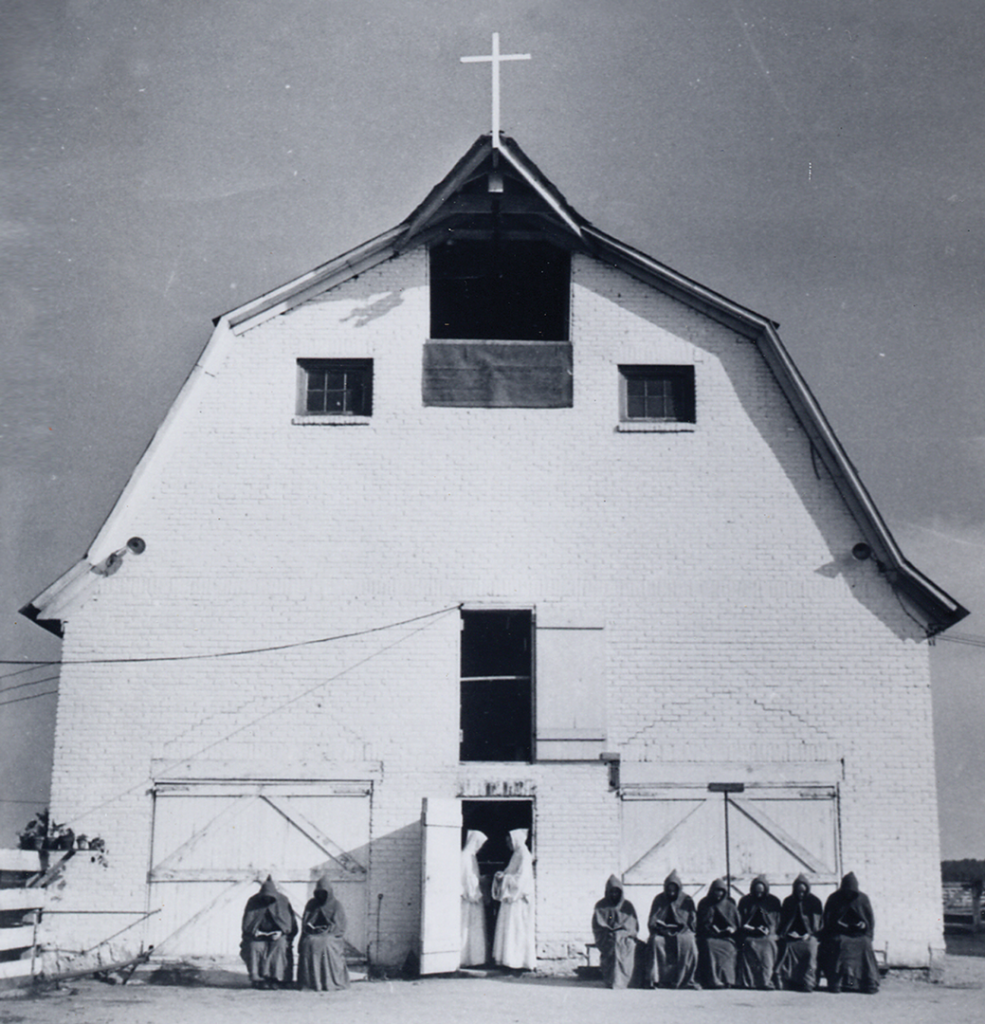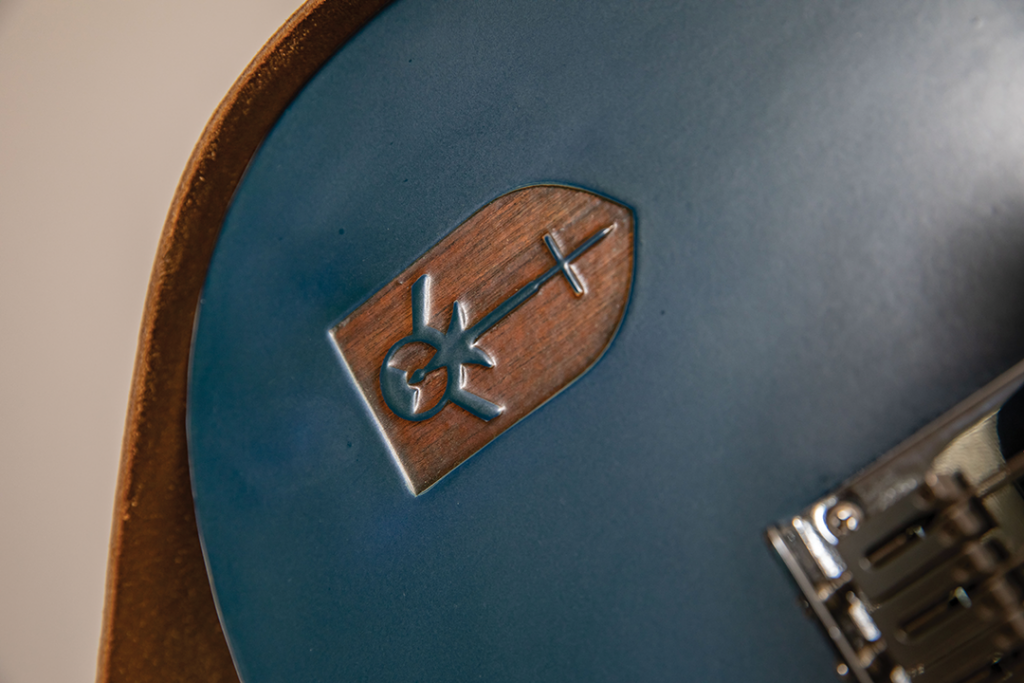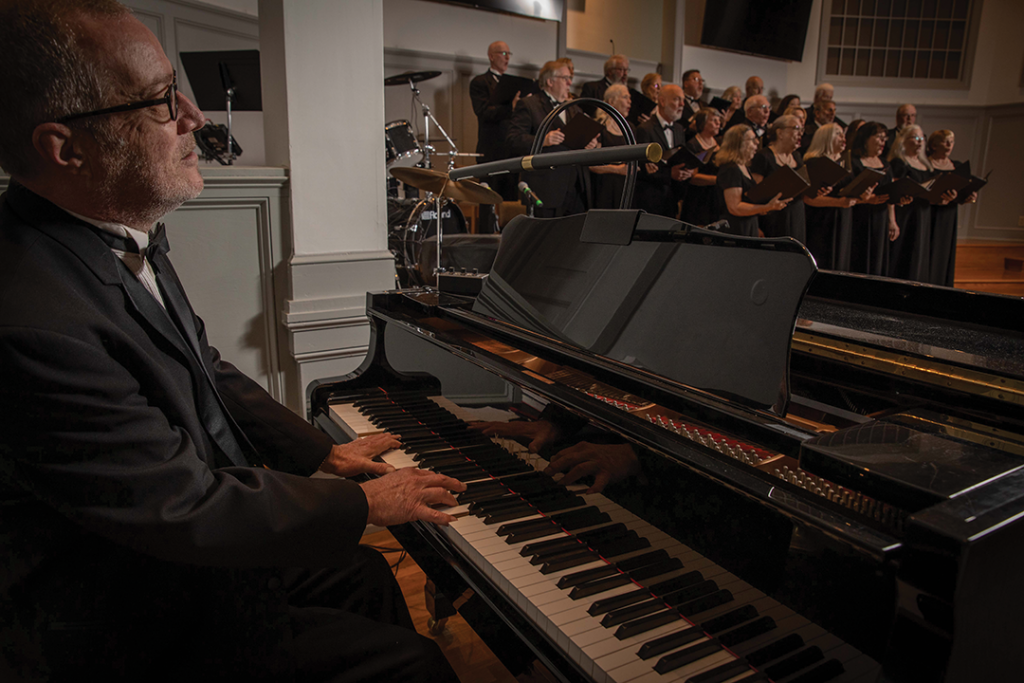Out of Wayne Kitchens’ longstanding adoration for the Monastery of the Holy Spirit in Conyers sprang the idea to preserve some of its rich history by creating a one-of-a-kind instrument from repurposed lumber.
Soothing sounds of gentle bells floated through his open bedroom window on warm summer nights. They could be heard from two miles down the road. Throughout his childhood, this was reality for Wayne Kitchens, who grew up near the Monastery of the Holy Spirit in Conyers. It was as if the bells called to him somehow, forming the connection he still senses as an adult. He could never have imagined how this seemingly small link to a beautiful place that rests quietly off Highway 138 would grow stronger throughout his youth and into adulthood.
When Kitchens began his career as a meter reader with Snapping Shoals EMC, the monastery was one of his regular customers. His job required him to visit on a regular basis. Later, when he moved to the engineering department, he handled most of the orders regarding the electrical power needs at the monastery. It required more in-depth visits to the monastery, where he often worked with the on-site electrician: Father Matthew Torpey. It afforded Kitchens more opportunities to see parts of the monastery that were not open to the public.

A few years ago, Kitchens answered a service call at the monastery. He met with Father Torpey to discuss an issue the monastery had with powering an old barn on the property. He heard about plans to renovate the barn, along with other new construction projects. Planners intended to turn the old barn into a museum. Kitchens discovered a little more about the history of the old structure, deepening his connections with the monastery. His interest was piqued further when he learned more about the worn structure.
“This barn, I was told, was the first building constructed by the monks when they first came to Rockdale County from Kentucky in 1944,” Kitchens said. “The monks slept in the top of the barn while the cows occupied the bottom stables.”
“I have always loved guitars, but I don’t play very well. I just love to make noise on them. I thought it would be great to have a guitar made from a piece of history.”
Wayne Kitchens
While addressing the power needs of the barn during renovations, Kitchens saw workers tearing out old beams and other lumber to make room for the new construction. As the old wood was discarded, Kitchens realized a part of history was being thrown away.
“It was a shame to see it all just thrown into the dumpster during the remodeling,” he said, “so I thought it would be a good idea to make something beautiful out of it.”


Kitchens worked alongside Keith Adams at Snapping Shoals at the time and knew that Adams built guitars on the side. Soon, he developed the idea of using some of the old lumber from the barn to build a custom guitar. It was a unique way to preserve history. “I have always loved guitars,” Kitchens said, “but I don’t play very well. I just love to make noise on them. I thought it would be great to have a guitar made from a piece of history.” When the guitar was completed, Kitchens did not just hang it on a wall in his home. It was far more than a simple keepsake or showpiece. “No, it is an instrument that plays really well,” he said. “Keith did an excellent job building it.” Kitchens and Adams took the guitar to the monastery to show it to a few of the people who were in charge at the time. When Adams played it for them, their first response was to offer to buy it. Kitchens informed them it was not for sale but conceded that he believed it would someday make its way back to the monastery.
From fond boyhood memories of the sounds of bells ringing down the road to seeing a custom-made guitar built from repurposed lumber, Kitchens’ bond with the Monastery of the Holy Spirit remains as strong as ever.
“I’ve had a connection with the monastery all my life,” he said. “I think of Father Matthew since he was the one I knew best. I also think of some of the other places I worked at around the monastery. It is really a beautiful and interesting place.”
Click here to read more stories by Terri Webster.




